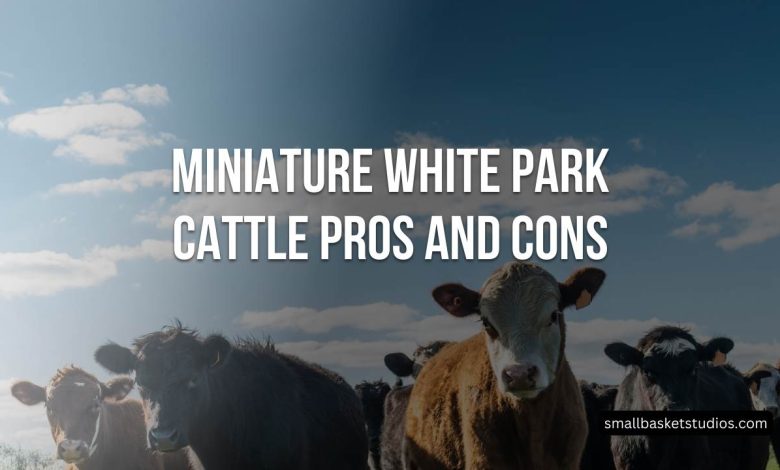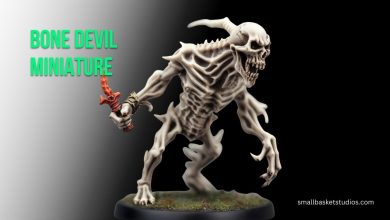
In the rolling hills and verdant pastures, a delightful breed of cattle has captured the hearts of many farmers and enthusiasts alike. The miniature white park cattle, with their distinct white coats and elegantly curved horns, have carved out a special place in the agricultural landscape. These diminutive yet hardy animals are a living embodiment of history, tracing their lineage back to the ancient cattle breeds of Britain.
As their popularity continues to grow, it’s essential to understand the multifaceted nature of owning and caring for these endearing creatures. This comprehensive guide delves into the world of miniature white park cattle, unveiling both the advantages and potential drawbacks of embracing these remarkable bovines. Join us on a journey through the captivating pros and cons, and discover if these charming cattle are the perfect fit for your farm or homestead.
The Origins and History of Miniature White Park Cattle
To fully appreciate the allure of miniature white park cattle, we must first explore their rich and storied past. These cattle are descendants of the ancient Auroch, a formidable wild ox that once roamed the forests of Europe. Through centuries of selective breeding and adaptation, they evolved into the compact and hardy breed we know today.
Originally bred in the parks and estates of British nobility, the miniature white park cattle were prized for their docile nature and exceptional grazing abilities. Their unique coloration and striking horns made them a true spectacle, adorning the grounds of many grand estates. Over time, their numbers dwindled, and efforts to revive and conserve the breed gained momentum, leading to the establishment of dedicated breeding programs and organizations.
The Pros of Owning Miniature White Park Cattle
Compact Size and Ease of Management
One of the most appealing aspects of miniature white park cattle is their diminutive stature. With an average height of around 42-48 inches (107-122 cm) for cows and 36-42 inches (91-107 cm) for bulls, they are significantly smaller than their standard-sized counterparts. This compact size makes them easier to handle, transport, and accommodate on smaller acreages or hobby farms.
Hardiness and Adaptability
Miniature white park cattle are renowned for their resilience and ability to thrive in a wide range of environments. Originally bred to withstand the harsh conditions of British parks and forests, they have developed a remarkable tolerance for extreme weather and varying terrain. Their hardy nature allows them to graze efficiently, even on marginal or rough pastures, making them an excellent choice for sustainable and low-input farming systems.
Calving Ease and Maternal Instincts
One of the standout qualities of miniature white park cattle is their exceptional calving ease. Due to their smaller size, the birthing process is generally smoother and less complicated compared to larger breeds. Additionally, these cattle are known for their strong maternal instincts, with cows being attentive and protective of their calves. This characteristic makes them ideal for small-scale breeding operations or for those who value the bond between mother and offspring.
Docile Temperament and Ease of Handling
Despite their impressive horns, miniature white park cattle are renowned for their gentle and docile temperaments. These cattle are generally easy to handle and train, making them suitable for even novice livestock owners. Their calm demeanor also contributes to a safer environment for both humans and other animals on the farm or homestead.
Grazing Efficiency and Sustainable Land Management
Miniature white park cattle are excellent grazers, capable of efficiently converting forage into high-quality meat and milk. Their compact size and selective grazing habits make them ideal for rotational grazing systems, where they can help maintain pasture health and biodiversity. Additionally, their smaller appetites and lower feed requirements contribute to a more sustainable and eco-friendly farming approach.
Unique and Appealing Appearance
The distinctive white coats and elegantly curved horns of miniature white park cattle add an undeniable charm and visual appeal to any farm or landscape. Their striking appearance has made them a popular choice for hobby farms, petting zoos, and even educational exhibits, where they serve as ambassadors for the preservation of heritage breeds.
The Cons of Owning Miniature White Park Cattle
While miniature white park cattle offer numerous advantages, it’s important to consider potential drawbacks to ensure a well-informed decision:
Limited Meat and Milk Production
Due to their smaller size, miniature white park cattle produce less meat and milk compared to larger, specialized breeds. While their meat is often praised for its exceptional flavor and quality, the overall yield per animal may be lower. Similarly, their milk production is modest, making them less suitable for commercial dairy operations.
Potential Health Concerns
Like any breed, miniature white park cattle can be susceptible to certain health issues. Some of the concerns include issues related to their horns, such as horn injuries or infections, as well as genetic disorders like dwarfism or fertility problems. Proper management and selective breeding practices can help mitigate these risks, but vigilance and veterinary care are essential.
Fencing and Containment Challenges
While generally docile, miniature white park cattle can be skilled escape artists, particularly if fencing is not properly maintained or installed. Their curved horns and smaller size may allow them to squeeze through gaps or even jump over shorter fences. Investing in secure and appropriate fencing is crucial to prevent potential escapes and ensure the safety of both the cattle and surrounding areas.
Limited Availability and Higher Initial Costs
As a heritage breed, miniature white park cattle can be harder to source and may come with a higher initial investment compared to more common cattle breeds. Finding reputable breeders and maintaining a diverse gene pool can be challenging, especially in certain regions. Additionally, the costs associated with acquiring foundation stock or breeding animals may be higher due to their rarity and demand.
Specialized Handling and Care Requirements
While generally easy to manage, miniature white park cattle still require specialized handling and care. Their unique horns and smaller size may necessitate adjustments to facilities, equipment, and handling techniques. Proper training and experience are essential to ensure the well-being of both the cattle and their caretakers.
Potential Challenges with Predator Protection
Due to their smaller size, miniature white park cattle may be more vulnerable to predation from larger animals such as coyotes, wolves, or even domestic dogs. Implementing effective predator control measures, such as secure fencing, livestock guardian animals, or other deterrents, is crucial to safeguard the herd.
Frequently Asked Questions (FAQs)
How much land do I need to raise miniature white park cattle?
While their compact size allows for smaller acreages, it’s generally recommended to have at least 1-2 acres of grazing land per animal. This ensures sufficient forage and space for rotational grazing practices.
Can miniature white park cattle be kept as pets?
While miniature white park cattle are known for their docile temperaments, it’s important to remember that they are still livestock animals with specific needs and requirements. While they can make excellent companions for experienced owners, they should not be treated solely as pets.
Are miniature white park cattle suitable for beginners?
Miniature white park cattle can be a good choice for beginners, especially those with limited space or experience. However, proper education, guidance, and preparation are essential to ensure the well-being of both the animals and their owners.
How long do miniature white park cattle typically live?
With proper care and management, miniature white park cattle can have a lifespan of 15-20 years or more. Regular veterinary check-ups, adequate nutrition, and appropriate housing can contribute to their longevity.
Are miniature white park cattle suitable for organic or grass-fed production?
Yes, miniature white park cattle are well-suited for organic and grass-fed farming practices. Their ability to thrive on diverse forages and their hardiness make them an excellent choice for sustainable and low-input production systems.
Conclusion
The world of miniature white park cattle is a captivating one, filled with both delightful advantages and potential challenges. These charming bovines offer a unique blend of history, hardiness, and endearing qualities that have captured the hearts of farmers and enthusiasts alike.
Whether you’re seeking a low-maintenance addition to your hobby farm, a sustainable grazing solution, or simply a visually striking presence on your land, miniature white park cattle may be the perfect fit. However, it’s crucial to carefully weigh the pros and cons, ensuring that you are prepared to provide the specialized care and management these remarkable animals require.



